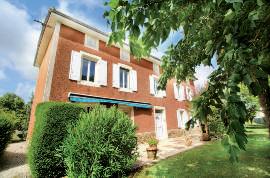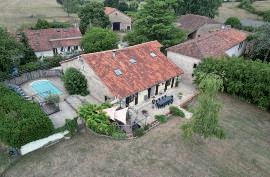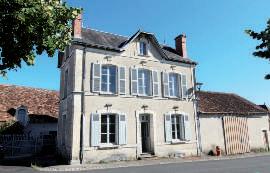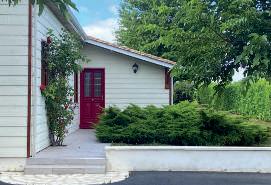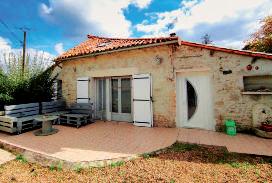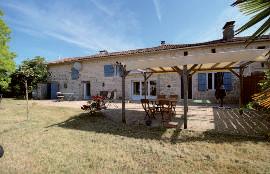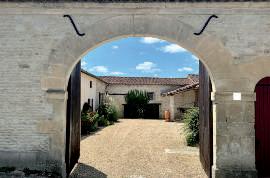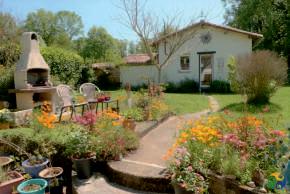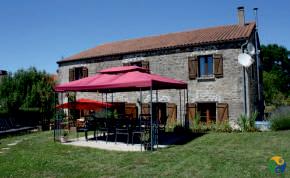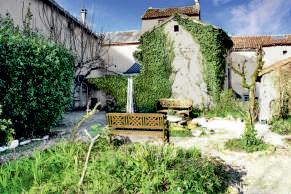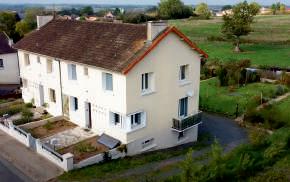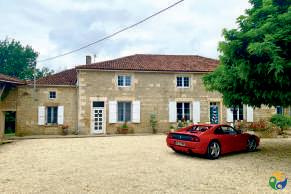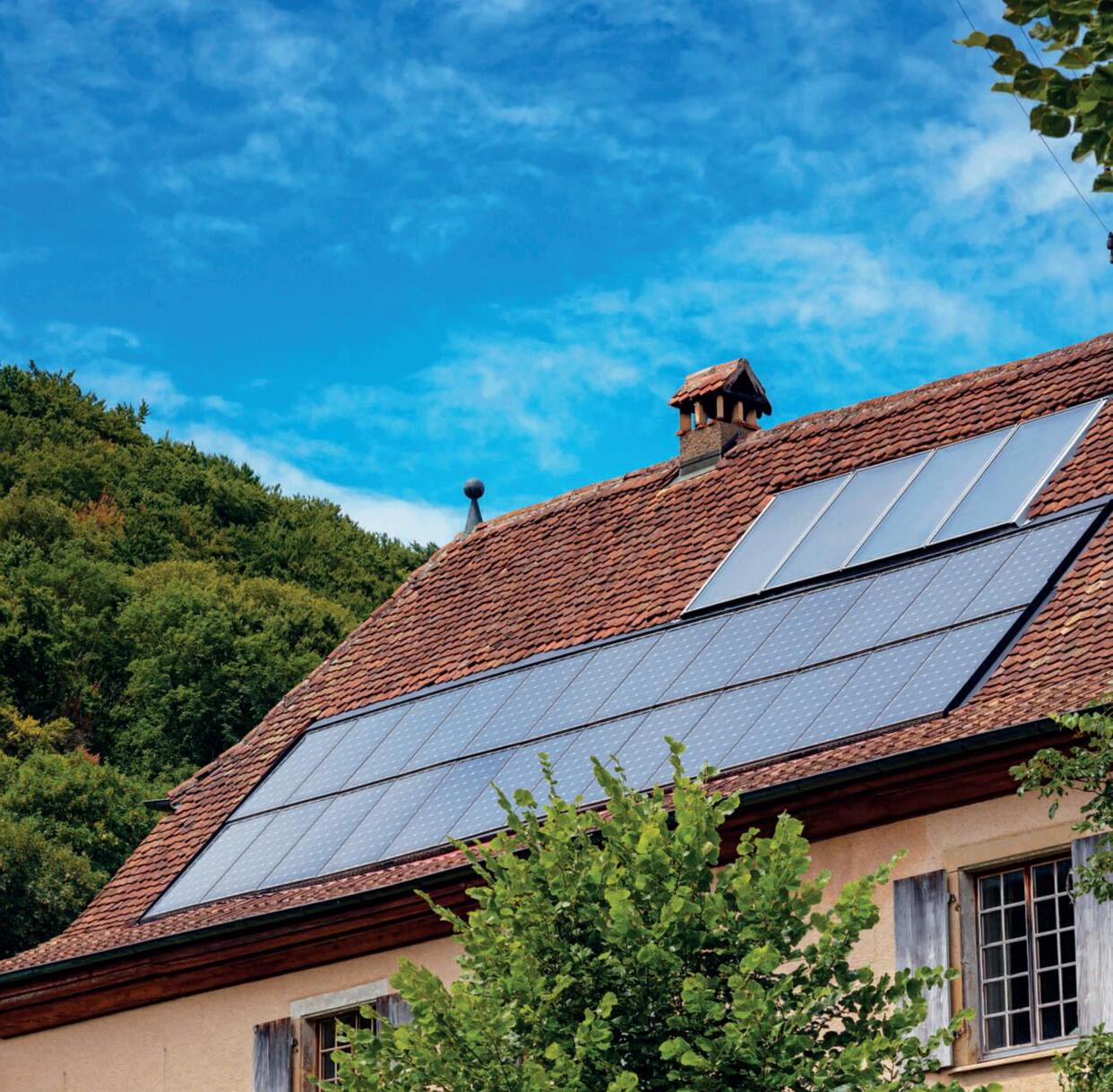




























CONTACT US:
Tel: 05 17 36 15 32
email: editors.etcetera@gmail.com
website: www.etceteraonline.org
17 rue des Chaumettes
86290 St Léomer
Commercial adverts: Please see our Media Pack at www.etceteraonline.org
What’s On/Listings: 12€ per 50 words for a guaranteed spot or free (space permitting)
Classified listing: 6€ per 25 words plus 3€ per photo
Property listing: 10€ per 50 words plus 6€ per photo

Code APE 5814Z Edition de Revues et Periodique
Siret 80903463000016. La Présidente G. Feasey
Registered. Le Bourg, 87360 Verneuil Moustiers.
Impression: Rotimpres. Pol. Ind Casa Nova. Carrer Pla de l’Estany s/n. 17181 Aiguaviva (Girona) Espagne. etcetera est gratuit.
While we always do our best to ensure the content in this magazine is given in good faith and businesses are reputable, we accept no liability for any errors or omissions and do not endorse any companies, products or services. Articles written are the personal opinions of the original authors and do not necessarily reflect the views of etcetera magazine.
Welcome to the September edition of etcetera magazine, its 17th anniversary!
As we head into September, we hope that you, like us, make the most of one of our favourite months of the year. The intensity of the sun dissipates and the air has a fresher feel to it. There are still plenty of things to go and do, see and enjoy, so if you can, get out and squeeze the last drops of summer. And if you’re a rugby fan, good luck to whoever you’re supporting!
Thank you to all of our advertisers, readers, contributors and distributors, old and new. We couldn’t do it without you.
Wishing you all a wonderful month ahead.
15 SAMU (Medical)
17 Gendarmes (Police)
18 Pompiers (Fire and also trained in medical emergency)
114 Text-message emergency number for deaf/hard of hearing
119 Child abuse
115 Homeless
113 Drugs and alcohol
112 European emergency not always English
1616 Emergency- Sea & Lake
3131 Last incoming call, key ‘5’ to connect Orange
English speaking helpline
0033 (0)9 69 36 39 00
Website in English: www.orange.com/en/home
Technical assistance for landlines (French): 3900 (+33 9 69 39 39 00 from abroad)

SFR 1023 or 00336 1000 1023 (Not English)
EDF
8am to 8pm, Monday to Saturday.
+33 (0)9 69 36 63 83 EDF Helpline in English
0033 562164908 (From UK)
05 62 16 49 32 Fax
E-mail: simpleenergywithedf@edf.fr

CPAM - 09 74 75 36 46
Veolia Water Emergency No: 24h/24 et 7j/7
05 61 80 09 02 (press 1 for urgent problems or 2 for a technician)
S.E.P Du Confolens (Water)
05 87 23 10 08 Emergency 24/7
Aéroport Int’l Limoges 05 55 43 30 30
SNCF (train times, buying tickets etc) 36 35
Alcoholics Anonymous
For contact details of meetings in your area including those conducted in English, visit www.aafrance.net
HOSPITALS
05 55 05 55 55 Limoges (CHU)
05 55 43 50 00 St Junien
05 55 47 20 20 Bellac
05 49 44 44 44 Poitiers
05 45 24 40 40 Angoulême

05 49 32 79 79 Niort
05 45 84 40 00 Confolens
Women for Women in France offering support to foreign-born (non-French speaking) women dealing with domestic abuse www.womenforwomenfrance.org

Counselling In France Counsellors, psychotherapists, NLP, CBT etc offering therapy in English to expatriates all over France on www.counsellinginfrance.com

SSAFA France 05 53 24 92 38 email france@ssafa.org.uk
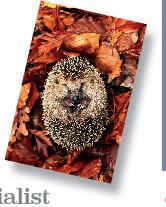
French Health Insurance Advice line
CPAM English speaking Advice line: 09 74 75 36 46 (from France)

0033 974 75 36 46 (from other countries). The line is open from Monday to Friday, from 8:30 a.m. to 5:30 p.m.
NHS website : www.nhs.uk/using-thenhs/healthcare-abroad
www.ameli.fr
No Panic France Helpline:
No Panic UK helpline:
0044 1 952 590 545 11h - 23h (French time) 7/7 www.nopanic.org.uk /nopanicfrance@orange.fr
English-speaking Crisis Line
SOS- HELP 01 46 21 46 46 3pm-11pm 7/7
British Consulate in Paris 01 44 51 31 00
British Consulate in Bordeaux 05 57 22 21 10 www.ukinfrance.fco.gov.uk/en/
Credit Agricole English Speaking Helpline Charente (residents only) 05 45 20 49 60







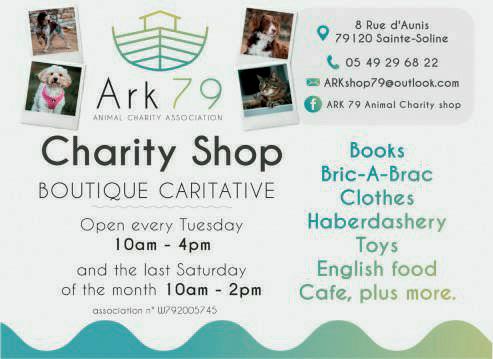








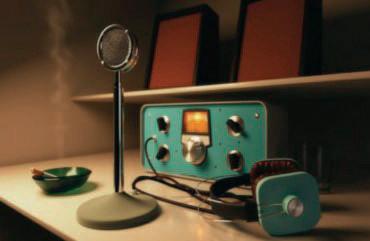















ACRYLIC POUR PAINTING IS A TECHNIQUE THAT INVOLVES MANIPULATING ACRYLIC PAINTS TO CREATE STUNNING ABSTRACT PATTERNS AND DESIGNS ON A CANVAS - THIS VERSATILE AND UNPREDICTABLE ART FORM CAN PRODUCE UNIQUE RESULTS EVERY TIME YOU EXPERIMENT!
Acrylic paints (various colours)
Pouring medium
Canvas or other painting surface
Plastic cups or mixing containers
Stirring sticks or plastic spoons
Plastic sheet or an old tray
Heat gun
(optional, for removing bubbles)
Blocks/cups/bowls to create a raised surface
Protective covering for your workspace
1. First of all, place the protective covering on your work surface (it can get very messy!).
2. Select the acrylic colours you want to use for your pour. You can choose a harmonious colour scheme or go for contrasting colours for a more dynamic effect. (Consider who the art is for, or which room you might want it to go.)
3. Pour each colour of your chosen acrylic paint into its own cup. To create a fluid consistency, mix each paint with a pouring medium. The pouring medium helps thin the paint while maintaining its colour and adhesive properties. Use a ratio of approximately 2 parts pouring medium to 1 part acrylic paint. Stir the mixture until it's well combined, but avoid creating too many bubbles.
4. There are several pouring techniques you can experiment with, such as the dirty pour, flip cup, swipe, and puddle pour. Each technique creates a different pattern and texture on the canvas.
5. For a dirty pour or flip cup technique, layer the different coloured paints in a single cup. You can pour the paints in a specific order or pour them randomly for a more unpredictable result.
6. Place your canvas on an elevated surface, (blocks, old cups etc), to allow the excess paint to drip off. Invert the cup onto the canvas and lift it, allowing the paint to flow and spread. Tilt the canvas in different directions to guide the paint and create interesting patterns.
7. If you're using the swipe technique, pour the paints separately on the canvas and then use a flat tool like a palette knife or a cardboard piece to gently swipe across the paint layers, creating unique colour blends.
8. Once the initial pour is done, you can use a smaller cup or a squeeze bottle to add additional paint accents or details to the canvas.
9. To eliminate air bubbles that might have formed during mixing or pouring, you can use a heat gun. Gently move the flame across the surface of the paint to pop the bubbles. Be careful not to overheat the paint or scorch the surface!
10. Place your canvas on a level surface and allow it to dry completely. Drying times can vary based on factors such as humidity and the thickness of the paint layers. It might take anywhere from a few hours to a day or more.
11. Once your acrylic pour is thoroughly dry, apply a clear acrylic varnish or sealant to protect the surface and enhance the colours.
12. Your acrylic pour masterpiece is now ready to be displayed!

Former BBC London Tuner Complete piano renovations (grands specialist)

TUNING & REPAIRS
Never throw away your treasured piano, until we have seen it! We have repaired and reconditioned pianos in England and in France for over 40 years, from mini pianos to concert grands. Many years of experience.
Telephone: 05 45 21 16 13

Email: mr-piano-man@hotmail.com
BEAUTIFUL GIFTS & CARDS for All Occasions
ChristmasCardsfrom4th October
DELICIOUS HOME-MADE CAKES

Scones, Cupcakes, Brownies, Fruit Cake, Muffins
Sat 23rd & Sun 24th September
GENÇAY’S 2nd FOIRE EXPO
Stands & Events from 10am - 6pm
Come visit us in the Salle des Fêtes
Stand will have Gifts, Cakes & Cards (shop open on the Saturday)
#chezchristiesgencay ChezChristie’sGençay
ServingWarmWelcomesSince2004!
www.chezchristies.fr
05.49.50.61.94 GENCAY (86) - behind la Mairie
CLOSED FOR STOCKTAKE TUESDAY 3rd OCTOBER
Siret: 47876969800018
Contact Andrea: 06 17 45 65 60 ateliernumero18@gmail.com Place Rue de la Republique 860290 La Trimouille
Encadrement d’Art
1 Rue du 19 Mars 1962
87150 Oradour sur Vayres
Picture framers to La Galerie de Gabriel
Custom Framing for Arts, Crafts & Memorabilia



John Selley EI - 09 77 00 66 38


Email: encadrement.oradour@gmail.com


Browse our selection of unique gifts, enjoy a meal from our new menuindoor & terrace seating available. BESPOKE by Denise can also be contacted directly on 06 75 89 95 55
To view our collection, please visit our FB page: www.facebook.com/bespokedenise.eyre or website www.bespokebydenise.com

BESPOKE JEWELLERY, REMODELLING, REPAIRS, PEARL STRINGING


First of all, the question “Why learn French?” must be answered, even though, for many of you, it is obvious. It should be obvious to every single foreign person living in France and it is requested more and more by the authorities, especially with new regulations for the delivering of the “Titre de Séjour” (Residency Permit).
Learning French broadens your horizons!
If you are on holiday in France, it is expected that foreigners know the minimum of the language, like the greetings (Bonjour, Au revoir, Madame, Monsieur, …), the politeness words (s’ilvous-plaît, merci, ...), and the words for asking for something (Je voudrais …, s’ilvous-plaît, …), and a bit more, basically, as much as you can. It will be really appreciated.
If you live in France, it is necessary to learn French in order to be able to communicate with everyone, but also to be able to understand the letters, bills, and telephone calls you receive every day, and, for example, to call the fire brigade / emergency ambulance / police / recovery car, to make an appointment at the doctor’s, to speak to the doctors and nurses, to ask for something you need, to explain what is wrong with your car at the garage…. Moreover, and this is important to know, French people will be more patient and willing / obliging if you speak some French. Speaking French opens the door to better and quicker services. Remember that learning French is also a mark of respect towards the French people and France, and it is written in the law.

Living in France means you are exposed to French outside the classes, therefore you should be able to cut down the time needed to learn it, if you practise of course.
Now then, you know that learning French when living in France is crucial, but how to learn French?
Several methods can be used. The more you “play” and practise, the better and easier it will be. Repetition is the key to success! But, essentially, relax with the idea of learning a new language. Don’t be afraid of making mistakes.
Written French and spoken French are almost 2 different languages
It is important to know from the beginning that written French and spoken French are almost 2 different languages. For example, we write many letters in words that we do not sound. We make “liaisons” in words…. So, it is necessary to learn both spoken and written French.
Learning French, like any other new language, implies a lot of memorisation, and often, as adults, our memory is not what it used to be. However, this should not be an excuse not to learn French, as everyone can succeed. It all depends on how much time you spend and on how much contact you have with the French language. I had a senior student who was 84 years old and she did well.
1. Study French regularly, for a short time, not all in one sitting
Do not study French all morning!
(Especially not just before your French lesson!) You will exhaust yourself, and you will be likely to get frustrated, lose your motivation and attention, and worse, you may not be able to remember much of what you studied! So, you would have spent hours for nothing, gaining nothing except frustration!
My advice is to study French 15 minutes a day, every single day when you are a beginner. The time will be increased as your level in French goes up. Added to that, take time to learn French in a class or by yourself, and practise every day. Focus on all that you did achieve instead of letting frustration get to you. Relax when learning, you will enjoy it. Leave your French book, notebook, and papers open on the kitchen table and glance at them as many times as you can.
2. Find out what is your own learning style
Do you need to write to remember? Do you need to listen to memorise? Do you need to read to learn things by heart? Use the method that corresponds to your own type of memory.
Also find out if you are better at remembering in the morning, afternoon, or evening. Revise your French at that moment of the day.
3. Self-studying is NOT for everybody
As everybody is different when it comes to learning languages, some people may find it easier than others. I know, it is not fair! You need to self-study in order to revise, review, do your homework… and see what you have been taught in class.
Self-studying only is not sufficient enough to learn any language, and there is also the risk of not being regular in doing it, it can demotivate, you may not know what to learn first, and you do not have the guidance from a teacher, you have no one to tell you if you are correct.
You need someone to listen to you and correct your mistakes
Find a French person to correct your French pronunciation. You need someone to listen to you and correct your mistakes. No software or recorded lesson can do that. It needs to be a real person.

Some learners need the expertise of a teacher to guide them through their studies, motivate them, and find creative ways to explain the same point until it is understood. A good teacher has got a lot of patience and is inventive, adapting to your needs, capacity, and style of learning.
You can invest in group classes, but only small groups (6 to 8 people maximum), and / or you can invest in some private French lessons. A native
Élargissez vos horizons avec CONTINENTAL HORIZONS ! Broaden your horizons with CONTINENTAL HORIZONS!

Isabelle works for CONTINENTAL HORIZONS Language Centre in L’Isle Jourdain 86. She is a specialist Teacher of French as a Foreign Language with more than 26 years’ experience.
Do not hesitate to contact her on 06 20 10 34 49 or 05 49 84 17 73
Learn French with Continental Horizons! Contact us by email : continentalhorizons@free.fr
French speaking French teacher can change your accent for the rest of your French speaking life.
Always check the diplomas / credentials / experience of a teacher. Is the teacher specifically trained and experienced to teach French as a Foreign Language (FLE : Français Langue Etrangère) to adults? Ask around about the teachers in your area from others.
Take part in conversation groups with your French teacher or French people, take part in as many activities as possible where you meet French people (clubs and associations, comité des fêtes...).

4. Do not translate all the time between French and English
When you are a total beginner, some translation can occur, but try to avoid it. You will quickly find out that French is different (of course!), so the order of words may be different, some ways of saying things are totally scrambled compared to the English way, most expressions are not translatable. Literal translation does not work anyway.
5. Use images and visual situations for French words, not English words

Try to link the new French vocabulary to images, situations, feelings…. Also, it is

proven by neuro-scientists that associating two things together will help you to remember them, in the long-term memory, as we create more links in the brain, so it makes it easier to retrieve the information.
The use of flashcards, drawing the word / situation… can really help. At the same time as learning a new word, learn it with its gender (masculine or feminine). For example, don’t learn “voiture”, but learn “la voiture”.
6.

Learn the new vocabulary in a sentence, and not always on its own. On top of that, the sentences will be easier to reuse in due time. Learning in context will help you to
remember the situation and words longer. Again, making associations is proven to be efficient.



7.

When your teacher told you to write some sentences for homework, use that opportunity to write about your life, what you did, what you will do, using the vocabulary you need.
Your brain will remember much longer a truth or a memory than made-up facts.
8.

On the same sheet of paper, or on flashcards, write all related French

vocabulary (and its gender) as you come across it. No need to put down the English translation. You will get to the info much faster if you have memorised it all together.

Use the technique of “mind mapping” as much as you can.
9. Listen to French (even if you don’t have a clue of what’s being said, and you’re not even paying close attention)
Reading magazines, newspapers… in French is important but not enough on its own.
It is interesting to know that the French language uses a different frequency of sound than the English language. That is why you need to hear French as much as possible, in order to tune your ears to this new frequency. That will help you to understand and also speak better.

Every language oscillates at a different range of frequencies, with British English at 2,000 – 12,000 Hz and French between 15 – 250 Hz and 1,000 – 2,000 Hz. People from countries in which Slavonic languages are spoken are, on the other hand, at an advantage. The frequency ranges of the approximately 20 Slavonic languages cover a greater bandwidth. This explains why the Eastern Europeans have a gift for languages.
That is why listening to French radio / TV also helps get your ears attuned to the sound.
In a class, learning French should always consist of spoken and written exercises.
10. Do not try to learn everything, you need to prioritise
It is an important point of using a teacher of French as a Foreign Language. The teacher will guide you to learn what is needed first and later, little by little, will introduce you to the more complex points. This is valid for spoken and written French and for grammar and tenses. There is an order to follow, the same way as you learnt your own language when you were a child.
For example, for tenses, in conversation, most of the time we use the “Présent de l’indicatif”. So, focus on that tense first, adding the “adjectives”, the essential vocabulary, how to make questions,
pronouns… and then you can move on to the past tenses like “Passé Proche” and later to “Passé Composé”. The French “Subjonctif” can wait! This will make an immediate difference in your ability to converse in French.
I have many tips available, thanks to my training and my 26+ year experience in teaching French as a Foreign Language to adults, so do not hesitate to contact me to get tailor-made solutions for you to learn French more efficiently.

Bon courage ! Keep positive! Et à bientôt !

The French language uses a different frequency of sound than the English languageLauren has a deep understanding of the French system and its complexities
THE POTAGER HAS A MIND OF ITS OWN WHEN IT COMES TO THE FRUIT AND VEGETABLES IT WILL OR WON’T PRODUCE FOR US!

Ingredients
1kg ripe pears (about 6)
150g soft prunes, chopped
150g raisins
150g dried cranberries
200g shallots, peeled and finely sliced
2 apples, peeled, cored and sliced

300g soft brown sugar
Each year brings gluts or dearths of different crops and this year is no exception. Last Summer, we had so many tomatoes, we were constantly picking them (or giving them away) and finding a myriad of different ways to tackle them and I still have some left over in the freezer. This year both the tomatoes and courgettes are a disappointment and I’ve even had to resort to buying them whilst the rhubarb crop remains fairly consistent. A lovely surprise is that our kiwis are fruiting for the first time,
and the fig tree is covered in hopeful green buds – I feel fig jam is on the horizon this year and if you’ve never made kiwi jam, give it a try!
We came to France from mid Kent, the “Garden of England” which is renowned for its bountiful orchards, producing prolific crops of apples and pears. Until last year, we owned a house in Normandy, set in an ancient apple orchard, and I have spent many happy late summer days there, preserving damsons, blackberries and tackling as many of the apples as I could. However, even though we have at least a dozen apple and pear trees here at Château Mareuil, in the 8 years we’ve lived here, they have produced very little, certainly never enough to think about how to preserve them – but is all this about to change? Maybe yes, the crops are looking plentiful, the early apple fallers are sweet and juicy, and a neighbour with plentiful damsons has said we can have as many as we wish, so it looks like I’m going to have to deal with a glut after all.
1 cinnamon stick
600ml cider vinegar
Method
1. Peel, core and chop the pears into chunks. Place them in a preserving pan or large saucepan along with the prunes, raisins, cranberries, shallots, apples, sugar and cinnamon stick. Pour in half the cider vinegar, season and slowly bring to a simmer, stirring until the sugar has dissolved. Cook for about 25 minutes, until tender.
2. Pour in the rest of the cider vinegar and cook for a further 30 minutes, stirring often, until thickened, if it’s still a bit runny, carry on cooking for a further 10-15 minutes.

TIP - A good test to see if it’s done is to draw your wooden spoon through the chutney and if it’s ready, it will leave a clear wake for a couple of seconds before the mixture levels again.
3. Pour the hot chutney carefully into warm, sterilised jars and seal. Cool and label – best left to mature for at least 3 months before eating.

This year both the tomatoes and courgettes are a disappointment and I’ve even had to resort to buying themFruity pear chutney Preserved pears
Ingredients
8-10 pears (not too ripe)
300g white sugar
2 litres water
2 star anise
4 cardamom pods
1 stick cinnamon
2 storage jars (Kilner jars work well)
Method
1. Peel, core, and quarter the pears. Add them to a bowl of cold water to which you have added some lemon juice to stop the fruit browning.
2. In a large saucepan, add the sugar, water, and spices. Bring to the boil. Transfer the pear quarters from their lemon solution to the boiling sugar water. Let them come to the boil again and cook for 5 minutes.
3. Pack your jars with the pears. Pour the remaining strained syrup over them to cover, leaving ½-inch of headroom from the tops of the jars. Wipe the rims with a paper towel. Secure the lids.

4. LONG-TERM STORAGE
If planning for long-term shelf storage (up to a year), fill the jars as above but before sealing them put them in a roasting tin with 3 inches of water for 20 minutes in a hot oven.
5. Very carefully, close immediately on removing from the oven.
Ingredients
2kg plums or damsons *

2kg sugar
*Choose firm plums, discarding any bruised or damaged ones, overripe fruit will not have enough pectin to set the jam.

Equipment
Sugar thermometer **
**Either use a sugar thermometer which gives a ‘jam’ temperature, or pop a couple of saucers in the fridge before you start for the ‘wrinkle’ test (see Step 4). I usually combine both methods just to be sure!
Method
1. Weigh the fruit before you begin, then halve the plums or damsons, removing the stones. If the stones are difficult to remove, you can skim them off the surface of the cooked jam later.
2. Place the fruit in a large saucepan or preserving pan and heat gently until they soften, you can add a spoonful of water or so to help them along.
3. Add the same weight of sugar as fruit – I typically find that 2 kgs of fruit (and therefore 2kg of sugar) is a manageable quantity to cook in one go. Heat gently, stirring to dissolve –it’s important to make sure that all of the sugar is dissolved because you don’t want gritty crystals in the finished jam.
4. Increase the heat and boil for another 10 minutes or so until it starts to look
ByBelindaPrinceBelinda, the ‘Accidental Chatelaine’ loves to cook at any opportunity and is delighted to be able to share that love with you



www.chateaumareuil.com
ready/reaches temperature, then test by dropping a little onto one of your cold saucers. You can pop it back in the fridge for a couple of minutes, then if it wrinkles when you push it to one side with your finger, it’s ready to pot.
5. Pour very carefully into warm, sterilised jars, seal and label when cold.
Also known as Fruit Cheese or Fruit Paste. It has a smooth, firm, and sliceable texture similar to cheese, hence the name. Delicious with cheese, paté or cold meats.


Ingredients
1kg damsons (or small plums)
500g apples (ideally cookers)

1 vanilla pod (optional)


800g white sugar or preserving sugar
Oil for greasing
Caster sugar (Sucre en poudre) for dusting
Method
1. Pop the damsons or plums into a preserving pan or large saucepan. Quarter the apples (there is no need to peel or remove the pips) and add to the pan with the vanilla pod, split in half, if using. Half cover the fruit with 600ml water and bring to a gentle simmer. Cook, partially covered for 30 minutes.
2. Pass the fruit through a sieve or Mouli, in batches, into a large bowl. Stir the

pulp with a wooden spoon to help it through this process. Discard the residue. Scrape the seeds from the vanilla pod into the sieved fruit, if using and discard the pod.
3. Measure the purée into a jug, you should have about 1.2 ltrs. Add the sugar (100g to every 150ml of purée) and heat very gently until the sugar dissolves. Bring to a gentle simmer and cook for about 1 ¼ hours, stirring regularly – don’t go away and leave it as it burns easily! It’s ready when your wooden spoon leaves a clear wake. Remove from the heat.
4. Oil a deep baking tray, about 26 x 17cm and line with baking paper. Pour in the purée, cool, then chill for 12 hours until set.
5. Cut into 18 squares. To store, dust with caster sugar, leave to dry, then layer up between baking paper in an airtight container. Store in a cool place for up to 6 months.
Ingredients
24 apples, peeled, cored and chopped
750ml water
200g cup white sugar
1tsp ground cinnamon

Method

1. Combine the apples, water, sugar, and cinnamon in a saucepan; cover and cook over medium heat until the apples are soft, about 15 to 20 minutes.
2. Allow the apple mixture to cool, then mash with a fork or potato masher until it is the consistency you like.
3. At this point, you can use it within a few days, or pop into freezer bags and freeze for up to a year.
Freezing apples and pears is a great way to preserve the freshness and flavour of these fruits for later use. They can be frozen to be used in cooking, baking, smoothies, and other dishes. If you have room in your freezer (I rarely do), it’s worth freezing apples and pears to enjoy all year long.
Method
1. Peel and core the apples and/or pears, then cut into 1/2cm slices
2. Make a lemon juice bath to soak the cut slices in.
3. Soak for 5 minutes (to prevent browning), remove and strain.
4. In a single layer, arrange the apple slices on a baking sheet.

5. Freeze for several hours, or overnight.
6. Once completely frozen, you can transfer the apple slices to a freezer bag, or other container, storing them for up to a year.
Properly sterilised glass jars are crucial for safe and successful food preservation. Using the oven method can be a convenient way to achieve this.



Materials

Glass jars with lids (new or previously used, but in good condition, no damage)
Baking sheet
Oven

Timer

Dish towels or clean paper towels
Steps
1. Wash the jars and lids in hot, soapy water. Rinse them thoroughly to remove any soap residue.
2. Preheat your oven to 120°C.
3. Arrange the clean jars (not the lids) upright on a baking sheet. Make sure the jars are not touching each other or the sides of the baking sheet.
4. Place the baking sheet with the jars in the preheated oven. Allow the jars to sterilise for about 20 minutes.
5. Boil the screw top lids, remove carefully wtih tongs/fork and dry with clean kitchen towel.
6. After the sterilisation time is up, carefully remove the baking sheet from the oven. Use oven gloves or towels to protect your hands.
7. While the jars are still hot, carefully fill them with your prepared preserves. Leave the recommended headspace as specified in your recipe.
8. Wipe the rims of the jars with a clean, damp cloth to remove any residue. Place the preheated lids on the jars and screw on until they are fingertip tight. Do not overtighten.
9. Allow the filled jars to cool completely on a clean towel or paper towels. As they cool, you might hear the lids "pop," indicating that a vacuum seal has formed.
T. 07 87 14 96 29




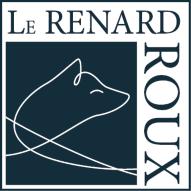


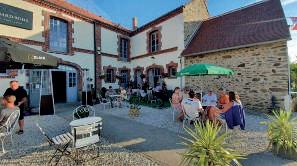


Two new categories of vehicles have been created recently (2019 et 2022) in the French road code. The electric kick scooters, gyroroues, gyropods, skates électrique are called EDPM (Engin de Déplacement Personnel MotoriséPersonal Motorised Displacement Vehicle), and the electric bikes are called ‘draisiennes électriques’. The VAE (vélo à assistance électrique also known as vélo électrique) are electric bikes and already existed.

To belong to those 2 new categories, the maximum speed cannot exceed 25 km/h. Above 25 km/h, they are not allowed on the road.

The last few years have seen a huge increase in the usage of these vehicles, especially in towns. To go to work, have fun, or simply to get around, they are ecological, practical, and more economical than a car or a proper motorbike. The French government has amended the French road code to integrate these new types of vehicles but also to define their proper usage for the security of everybody.
1 . What are the general rules:

▪ Users have to adopt behaviours for the safety of others as well as their own.
▪ Just as bikes, it is forbidden to drive them under the influence of alcohol or drugs. Note that if you are caught under the influence while riding, you will lose your car licence as well as being fined.
▪ It is forbidden to wear headphones or anything which emits a sound, or use a mobile phone while riding.
2. Where can you ride them:
▪ You cannot use them on pavements (unless the mayor has authorised them). On the pavement, the vehicle must be
ridden ‘manually’, i.e. without using the motor.
▪ In town, those vehicles must be ridden on the area set for them if they exist (cycle lanes). Otherwise they can be ridden on the road where the maximum speed is 50 km/h or less.
▪Outside towns, they can only be used on green roads (voies vertes) or cycling roads. However, some communes can authorise them and in that case, they must be ridden with a helmet and a yellow fluorescent jacket.
▪ Parking is allowed on pavements as long as it does not interfere with pedestrian use. A future law (La loi mobilités) will enable mayors to introduce stricter rules.
3. Who can drive them:
▪ Anybody over 12 years old but keep a close eye on French news as this may increase to 14.
▪ Only one person allowed on the vehicle. And only personal usage, not professional.
4. What equipment is required:
▪ In towns, a helmet is not an obligation but highly recommended
▪ Outside town a helmet is an obligation
▪ At night or by day with poor visibility, you must wear a fluorescent jacket or arm band.
5. What equipment must they have and what is the maximum power:
▪ They must have navigation lights and backlights, reflecting lights (catadioptres), a braking system, and a horn.
▪ Maximum speed 25 km/h.
6. What insurance is needed:
▪ They have to be insured for legal liability insurance just like a motorbike or a car. This insurance covers the damage that be caused to others if you crash into them.

▪ Note that if you injure a pedestrian in an accident with your vehicle without having the proper insurance, the Fonds de Garantie des Assurances
Obligatoires (FGAO) will intervene to compensate the victim but will ask you to reimburse them with an increase of 10% (interest). Plus there would be a fine for not having the proper insurance which is 3750€.
▪ Except for electric bikes, see section 8.
7. What are the sanctions:
▪ If you do not respect the highway code, or, you are carrying a passenger: 35€ fine
▪ If you drive on the pavement or have increased the vehicle’s power (done it yourself) to above 25 km/h: 135€ fine
▪ If you drive a vehicle that you purchased with a power above 25 km/h: 1500€
▪ Not wearing appropriate gear (yellow jacket, etc) at night : 35€ fine
▪ No insurance: 3750 euros fine.
Attention: There is talk of these fines increasing, so keep up-to-date with news here: www.securite-routiere.gouv.fr

8. Electric bikes (VAE):

▪ Definition is that they must stop working when you stop pedalling, the motor stops if the speed goes over 25 km/h, the motor stops when you use the brakes, motor power is 250 watts maximum, and it must not be equipped with an accelerator or anything allowing the bike to move on its own (without you pedalling).
▪ They are automatically insured under your public liability with your house insurance so do not require a separate insurance. But you must have a house insurance contract.
▪ They can be ridden at any age.
9. Allianz insurance: We have 3 types of cover and it is the same price for all vehicles:
▪ Minimum liability insurance: 55€ per year
▪ Liability insurance plus injury to yourself insurance up to 250 000€: 90€ per year
▪ Liability insurance plus injury to yourself insurance up to 1 000 000€ : 125€ per year
Conclusion: Follow the rules and get insurance from me if you have one !
ANGLO FRENCH HELP contact@anglofrenchhelp.com
Growing up in France, Lauren has experienced firsthand the complexities of the administration system, especially for non-French speakers. She’s here to accompany you on your French journey, offering admin help, translation, interpretation, and a deep understanding of the French system (See ad on page 13)

As an expat from the UK relocating to France, one of the most crucial aspects of your new life is ensuring access to quality healthcare. France boasts a worldrenowned healthcare system that provides comprehensive coverage to all residents, including expatriates. Registering for French healthcare in 2023 is a straightforward process, but it's essential to understand the necessary steps and requirements to ensure you receive the best possible care while living in this beautiful country.
Understanding the French Healthcare System
France takes pride in its universal healthcare system, known as the "Protection Universelle Maladie" (PUMA),
which grants all residents access to medical services and facilities. The system is funded through social security contributions from employers, employees, and the government. As an expat, you will be eligible for the same healthcare benefits as French citizens once you complete the registration process.
Before embarking on the healthcare registration process, you must first establish your legal residency in France. This involves obtaining a residence permit or a "Carte de Séjour”. Your residence permit serves as proof of your eligibility for French healthcare and is essential for all administrative matters within the country.
Your residence permit serves as proof of your eligibility for French healthcare
To access the French healthcare system, you need to register with your local "Caisse Primaire d'Assurance Maladie" (CPAM) office, which is the primary administrative body responsible for health insurance in France.

The main documents you will need to provide:
1. Passport or national identity card
2. Proof of residence (Carte de Séjour or other applicable documents)
3. Proof of employment or selfemployment (if applicable)
4. Utility bills proving you have been in France for longer than three months.
5. Your UK S1 form if you receive a state pension.
Once registered with the social security system, you will be assigned a unique social security number, which is crucial for all healthcare-related transactions. You’ll then be able to order your “Carte Vitale”. Resembling a credit card, it contains a microchip that stores essential personal and medical information, making it a
digital lifeline for efficient and paperless healthcare transactions.
While the PUMA provides a high level of coverage, many residents choose to supplement it with private health insurance, or "mutuelle", to cover additional costs and services not covered under the public system.
There are various private insurance options available, each offering different levels of coverage and additional services such as dental care, optical care, and alternative therapies. Before choosing a "mutuelle," compare different policies to find the one that best suits your needs and budget.
With your social security registration and, if applicable, private health insurance in place, you can now access healthcare services in France. The country boasts a vast network of medical facilities, including public hospitals, private clinics, and local healthcare centres.
You can freely choose a general practitioner or "médecin traitant" as your primary care doctor. This GP will serve as your main point of contact for nonemergency medical issues and will provide
referrals to specialists when necessary. It's essential to develop a good relationship with your GP, as they play a crucial role in coordinating your healthcare and managing your medical records.
If you are moving to France with family members, they are also eligible for healthcare coverage under the PUMA. Spouses, children, and dependent relatives can be added to your social security registration, ensuring they have access to the same healthcare benefits as you. Registering for French healthcare is a fundamental step for any UK expat planning to make France their new home. The country's universal healthcare system provides excellent coverage and access to medical services. By following the steps outlined in this guide, you can navigate the registration process with ease and ensure that you and your family have the necessary healthcare protection in your new life in France. Remember to explore private health insurance options for additional coverage tailored to your specific needs. With proper healthcare coverage in place, you can embark on your French adventure with peace of mind, knowing that your health is in good hands.
It's essential to develop a good relationship with your GP, as they play a crucial role in coordinating your healthcare

Let’s face it, market volatility makes us all nervous and we fear losing money, but the ultimate question is whether we should panic and switch to funds that are performing better or stay the course until the markets even out again.
Knowing when to cut your losses or stay the course is difficult and will depend on your financial circumstances and type of investment. It is advised to consult with your financial advisor before making any major decisions that could affect your wealth.
First and foremost, the most important questions to ask are what your investment is for and what is the intended term of the investment e.g. For retirement, for a rainy day, for wealth building, or perhaps even children’s education.
Should I Stay or Should I Go?
Short-term investing: These are generally investments that are done for shorter term goals and could go up to about 5-7 years. Depending on the type of investment, the risk on these tends to be lower. They are invested in more stable funds as market volatility may affect the returns. This would include more exposure to bonds and cash.
investment. The risk is higher, but the returns could also be higher.
It is important that your investment beats inflation and earns interest so that your money can grow and accumulate compound interest with time.
There are times, however, when higher risk short-term investments that offer higher returns are possible. These could include structured products and trading. You need to be knowledgeable about these products and only try these under the expert advice of your financial advisor.
Long-term investing: These are investments that allow you to grow your portfolio and meet goals several years - or even decades - in the future. This often allows for a riskier investment as the fund will ride out the volatility and storms in the markets over the long term. This could include increasing the equities % of the
Your advisor will do regular reviews of your portfolio and any rebalancing if needed. This should keep your wealth building on track. Remember that beside your financial advisor, fund managers look at market trends and adjust the composition of your funds to achieve the best returns as well.
Remember that even experts cannot time or predict how the markets will perform, so keeping your money invested over the long-term is one of the best ways to ride out the ups and downs in the market.
Please note, the above is for education purposes only and does not constitute advice. You should always contact your advisor for a personal consultation. * No liability can be accepted for any actions taken or refrained from being taken, as a result of reading the above.
Helen Booth works as a financial adviser for deVere France S.a.r.l and has lived as well as owned property in the Deux-Sèvres region. Having worked in the financial services in the UK for over 15 years, Helen prides herself in being fully diploma-qualified for the services that she provides. Helen has lived and worked in France for over 8 years and enjoys being part of deVere France S.a.r.l., a division of one of the world’s leading independent financial consultancies, deVere Group.
With over $10 billion of funds under its advice and administration and with more than 80,000 clients around the world, deVere Group truly offers a myriad of unique products and notes that are not available anywhere else in the market. This, as Helen puts it, gives clients the pick of the crop when it comes to investing.
deVere France S.a.r.l. are regulated by ANACOFI-CIF and ORIAS which will only recommend French regulated products.

deVere France can advise you on ways to help safeguard and increase your wealth, as well as helping with HMRC-recognised pension transfers to a Qualified Recognised Overseas Pensions scheme (QROPS) to give you potentially more flexibility in your pension plans.

If you would like to know more about how deVere France can help you, contact

Helen Booth DipPFS , EFA : +33 (0) 77 171 2879 : helen.booth@devere-france.fr



While being a self-employed tradesperson comes with numerous benefits, you are also responsible for your technical expertise in the job you do and for running and maintaining your business. One crucial element that threads it all together is efficient planning. This article will explore why planning is vital for self-employed tradespeople and make suggestions to implement better planning in daily operations.
Time Management
Efficient planning allows self-employed tradespeople to streamline operations and manage their time effectively. Proper scheduling means completing projects within deadlines, allowing for contingencies, and other business-related tasks. There are plenty of apps and tools to help manage your time. Google Calendar is an excellent place to start.
Financial Management

Financial planning helps self-employed tradespeople maintain a stable and profitable business. Suppose your business does not involve the use of an accounting
software system. In that case, keeping simple Excel spreadsheets can help you keep track of your jobs, payments received, and expenses going out, helping you avoid financial challenges and maximise profitability in your business.
Clear
The presentation of your devis and factures reflects your business. They must include the various legales, i.e. decennale assurance and, if applicable TVA registration. There are plenty of devis/facture templates available online, which can be replicated on your computer and saved for continuous use. Clear Terms & Conditions help customers know what will happen and when and any payment terms they need to be aware of. And likewise, a customer needs to know what they can expect of you. Clear paperwork sets the tone and is appreciated by customers. If there is ambiguity, you leave yourself open to losing work to a competitor.


A poorly planned work schedule can increase stress levels, burnout, and compromised mental well-being. Organising and taking on excessive projects without considering workload capacity and neglecting personal time can lead to exhaustion and diminished productivity. Proper planning can help you achieve a healthy work-life balance, protecting both physical and mental health.
Well thought out planning is KEY to achieving long-term success and growth for self-employed tradespeople. Whether creating or managing your diary, getting your paperwork in order or budgeting wisely, just a few smart efficiencies in your business can lay the foundation for a thriving and prosperous future.
A poorly planned work schedule can increase stress levels, burnout, and compromised mental well-being

The gallbladder is a small pear-shaped organ which produces and stores bile. It is located under the liver on the right of the abdomen. Bile is a substance that is used to process (emulsify) fat in the body. Essential for digestion, it helps the body to absorb fat-soluble nutrients and vitamins. The gallbladder is an essential part of the whole gastrointestinal tract and deserves to be recognised for its important role. Most people never think about the gallbladder, taking the digestion of fats and other nutrients as a given, at least until something goes wrong. Unfortunately, gallbladder problems can remain without symptoms for a long time until gallstones form.
Here you will learn about some of the more common problems that can occur with the gallbladder, when you should refer to your medical team and most importantly, what you can do to prevent this from happening.
When something goes wrong with the gallbladder there can be severe and sudden pain, especially after eating certain foods, usually high fat. This can be due to gallstones or bile insufficiency. Problems can occur further down the digestive tract as a result, for example, a lack of bile salts leading to indigestion of fats can result in watery diarrhoea.
When problems occur such as diarrhoea, medications like Immodium or painkillers may be taken to suppress the symptoms with little or no awareness that the root cause is much further up the gastrointestinal tract. Where gallstones are identified, sometimes the medical solution is to remove the organ completely.
The gallbladder can usually be saved with diet and lifestyle and removing an organ should always be a last resort. Maintaining a healthy weight and living a healthy lifestyle will help you to avoid the problems that can occur with your gallbladder.
Usually development of gallbladder problems occurs in the over 40s and even more so over 60, more often in women and especially if there is a family history of gallstones. Being overweight or obese is a risk factor too and so is type 2 diabetes.
Gallstones (Cholelithiasis)
Hard small stones are usually made of bilirubin, bile salts or cholesterol. They can be from the size of a grain of sand to a golf ball. Made usually of a combination of fat and salts they cause sudden pain in the
upper right of the abdomen and can lead to complications if they aren’t treated.
Risk factors for gallstones include obesity, although losing weight too quickly can also lead to developing gallstones.
If gallstones block your bile duct they can cause a backup of bile, also known as biliary cholic. This may or may not cause symptoms which could include:
▪ Abdominal pain
▪ Darker urine
▪ Pale stools
▪ Jaundice - causing the whites of the eyes to turn yellow
▪ Chills and/or fever
▪ Nausea
▪ Vomiting
If you think you have gallstones, you should seek medical attention immediately.
Inflamed Gallbladder (Cholecystitis)
A secondary complication of gallstones can be an inflamed gallbladder. When bile is unable to leave the gallbladder to do its job of digesting fats, it backs up causing the gallbladder to swell. This can leave the person vulnerable to infection. If this is left untreated it can leave the gallbladder permanently damaged.
Perforated Gallbladder
Untreated gallstones can also lead to a perforation in the wall of the gallbladder, which allows fluids to leak into other areas of the body. This can lead to a large and widespread infection.
Gallbladder dysfunction
When gallstones have been left untreated and frequent swelling has occurred which had led to permanent damage, the gallbladder can become rigid or scarred.
Symptoms may include:
Diarrhoea
Bloating
Flatulence
Indigestion
Feeling full all the time
Recently nutrigenomics has emerged as a leading field in nutritional diagnostics. This is the field which combines genetics and nutrition, allowing nutritionists and natural health practitioners to profile the DNA of their patients and identify risk factors that predispose an individual to certain conditions. There is a gene which predisposes individuals to lower bile acid
Amanda is a registered Naturopathic Nutritionist and Nutrigenomics Practitioner. Gut, Digestion and Microbiome Specialist

www.amandakingnd.com
Email: nutrition@amandakingnd.com
production and where that gene is identified as having a variant, patients are advised to eat a lower fat diet and the fats that they do eat to be only ‘good’ fats like fish oils, healthy saturated fats like butter and raw dairy.
A diet high in refined carbohydrates, unhealthy processed foods and empty calories predispose a person to obesity, type 2 diabetes and then of course gallbladder problems.
How to take care of your gallbladder
1. Maintain a healthy weight
2. Include healthy fats like fish oils, omega 3 and daily olive oil
3. Avoid unhealthy fats like sunflower oil, rapeseed/colza and vegetable oils
4. Eat a high-fibre diet with lots of vegetables and fruit
5. Eat whole grains like oats, brown rice and quinoa
6. Consistent and moderate exercise
Including certain supplements in your diet can promote the production of bile if you are predisposed to producing less bile, you are diagnosed with bile insufficiency or you struggle to digest fat and you have some of the above symptoms. Including taurine rich foods will boost your bile acid production, or you can supplement magnesium taurate which is a taurine donor under the guidance of your health care professional.
Foods High in Taurine
▪ Scallops
▪ Turkey
▪ Tilapia
▪ Octopus
▪ Chicken
▪ Seaweed
▪ Beef
Adopting healthy lifestyle practises and eating a healthy diet whilst avoiding toxic foods will benefit all aspects of your body and mind, not just your gallbladder. If you would like to work with a natural health practitioner to improve your symptoms or prevent illness then don’t hesitate to reach out for a quick chat.
CARING FOR YOUR GALLBLADDER THROUGH A BALANCED DIET AND HEALTHY LIFESTYLE IS CRUCIAL TO PREVENT GALLSTONE FORMATION AND MAINTAIN DIGESTIVE WELL-BEING
Maintaining a healthy weight and living a healthy lifestyle will help you to avoid the problems
Naturopathic Nutritionist

Focusing on the root cause, not symptoms
Fatigue
• Poor sleep
• Weight issues
Hormonal Fluctuations
• Menopause
Fertility, Pregnancy and Breastfeeding
• Diabetes
• Cancer

• Arthritis
Want to Lose Weight This Year?

From just 6€ a week (5€ if you commit to 6 months)
Ran by trained coaches with years of experience.
Weds 9am & Thurs 10.30am
- Contact me for full details
What you get: A starter pack - Weekly recipe/inspiration card - Simple calorie counting Cooking demonstrations - EXCLUSIVE Facebook access - Milestone certificates
Contact Michelle on: +33 (0) 7 84 83 78 13
Siret 91936185700015
Reflexology Myofascial Release EFT siret:
Mobile Service from 87440
well-beingtherapies
emmajhodgson@hotmail.co.uk 0656 872967 (Fr mob) 07870 667159 (UK mob)

Sports nutrition
• Thyroid support Depression or Anxiety

t. 06 32 83 12 79 Siret 91503451600012
Spa days / Spa Nights: hut tub, massage + lunch / supper + b&b. Gift vouchers available. Specialist in Hot Stones Massage, Indian Head, Reiki, Facelift Rejuvenation, Shiatsu


Veggie/Vegan lunches & dinners ‘pop-up’ Cooking classes with Nikki Digital Photography & Knife-making workshops with Sean
BY
Face
/ Psychologist
Nicholas SEAGRAVE M.B.P.s.S. Psychologue
to Face

Maison de Santé
Call
Place du Champ de Foire aux Moutons 86150 L'ISLE JOURDAIN
Email: seagrave.psy@gmail.com
The British Psychological Society
HAIRDRESSER
ANNETTE VAN ES
Chez Martin 16150 Pressignac
For an appt please contact: 05.45.71.56.02 06.50.23.61.37

annette.vanes@orange.fr
siret: 518 364 989 00013
MICHAEL WILLIAM PARKHair designer with many years’ experience, including the Vidal Sassoon team. My salon is based in the heart of Le Dorat in the Limousin.
19 Place Charles de Gaulle. 87210 Le Dorat T. 06 47 43 01 66

This month’s article will explore choosing, planting, and caring for them for best performance.

Bulbs, corms, and rhizomes are all herbaceous perennials that create adapted storage organs made up of modified plant tissues which allow the bulbs to store energy throughout the dormant period and survive below ground. The difference between a bulb (such as a daffodil) and a corm (for example a gladioli) and a rhizome (Iris for example) is that a bulb is made up mainly of modified leaves attached to a flattened modified stem - in the centre of the leaves is the undeveloped
flower bud (you will see the layers of modified leaves when you cut them down the centre, just like in an onion). Corms and rhizomes are made up of modified stem tissue with nodes (growing points) visible where the stems and leaves emerge during the growing season. Many will produce ‘contractile roots’ which can push the bulb, corm, or rhizome up to the surface during the growing season to benefit from the ripening effect of the sun, and then pull
Caroline has been a lecturer in horticulture for 20 years and now runs a nursery and ‘garden craft’ courses in the Haute-Vienne at Le jardin créatif

them lower down into the ground during the dormant season.
It is very important that the leaves are allowed to photosynthesise and create sugars for storage over winter. Roots have access to nutrients so that the bulb can generate enough stored energy for healthy growth and flowering the following year, otherwise they will come up ‘blind’ (with no flowers) or decline in size and eventually lack the energy to grow at all. Therefore, the practice of tying up the leaves or
Caroline Wright Le jardin créatifIt is very important that the leaves are allowed to photosynthesise and create sugars for storage over winterGeneva single curtain - the main lateral rod is over 10 metres long! FROM LATE SUMMER ONWARDS THE SPRING BULBS, CORMS, AND RHIZOMES ARRIVE IN THE GARDEN CENTRES, SHOPS, AND ONLINE Nerine bowdenii grows particularly well in poor soils
Alliums


cutting them back straight after flowering is not a good idea as it hinders their ability to produce enough stored food to last through dormancy and for the first flush of growth. Unfortunately, the leaves can look scruffy as they start to yellow and die back but it is important to allow this natural process.
As a general rule bulbs should be planted to twice the depth of the longest dimension of the bulb (i.e if the bulb is 8 cm at the longest point, you should dig a hole at least 16cm deep, but in hot dry areas you can plant them slightly deeper to avoid them drying out too much).
Always break up the soil at the base of the hole and add some rich organic matter if you have poor soil and add some sharp sand if your soil has a waterlogging tendency. For pots and in the border, plant them in groups to get a better effect; they will bulk up over several years to create more impact.
Growing in pots: a nice way to give a splash of spring colour. You can layer the bulbs to get a longer season of interest from the container, planting the larger bulbs deeper in the compost, creating layers, finishing off with smaller bulbs such as crocus. Cover each layer with a couple of inches of compost. Bulbs grown in pots should be treated as a temporary display because they do not have access to the mineral nutrients in the soil and will not have enough energy to survive and give a good display year on year, so it is
best to plant them out into the garden after they have flowered and gone dormant and start with fresh bulbs the following year. You can move the pot somewhere out of the way while the leaves die back.
Growing in a mixed border: prepare the planting hole (the aforementioned width/depth ratio). To avoid having the fading leaves on view plant them amongst or behind other plants which will help to hide them. Remember that most of them will emerge before other plants so even quite short bulbs will be visible and other perennials will come into growth as they start to fade. Iris is particularly untidy after flowering so it is best to avoid planting it at the front of a border, otherwise you are forever having to take off the brown leaves.
Naturalising bulbs: bulbs can also look lovely naturalised in grass, so if you have a spring meadow area that you don’t cut until early summer, or an orchard etc, it is a nice way to add a bit more interest. This time you want them to look naturally scattered through the grass so the best way to achieve this is to get a handful of bulbs, throw them, and then plant them wherever they land. They will usually be planted singly this way but will bulk up naturally over time and may even self-seed.

When buying bulbs, it is best to get them from a reputable outlet. The ones that come in perforated bags with a little bit of
wood shavings or compost in may well have been in storage or in a warm shop for a long time so check the packets to make sure that the bulbs are plump and fresh and show no signs of mould. We buy ours mail order directly from Holland where most of them are produced and have been very happy with the quality. We don’t sell loose bulbs ourselves because they have a very short shelf life, but we do have certain varieties of later flowering bulbs that are happy to spend the summer in pots such as the impressive Eucomis comosa which is summer flowering, several varieties of Nerine which flowers late in the autumn and does very well on poor soils/sharp drainage, and several Crocosmia which are summer flowering.
Here are some of our favourites that we have found to survive the climate here well and give a succession of colour from late winter to mid-summer:
Snowdrops (Galanthus nivalis) & Cyclamen hederifolium for very early interest in shade, followed by crocus and tulips (I particularly love the tiny specie tulips such as Tulipa turkestanica) then come the Camassia, Gladiolus (I have found the gladiolus byzantinus – another specie – to be particularly reliable). Next the alliums begin, followed by the Crocosmia. Later in the year I look forward to the Eucomis and last of all Nerine.
Check out our website for our full plant list and our calendar of courses:
www.lejardincreatif.net
When buying bulbs, it is best to get them from a reputable outletGladiolus byzantinus






















AFTER AN ‘INTERESTING’ JULY FOLLOWED BY LATE AUGUST’S MINIHEATWAVE, WILL SEPTEMBER BRING US ITS USUAL WARMTH WITH A TOUCH OF FRESHNESS?
The days begin to shorten, and the sun loses some of its intense heat and our gardens recover some of their earlier seasonal freshness. There is still time to sit, for a while, and enjoy your garden but there are other things to do at this time of year. Keep removing weeds to prevent
● Start thinking about your garden for next year, as it's time to start planting spring-flowering bulbs. If your herbaceous perennials are looking a bit tired it’s a good time either to lift and divide, replanting or potting up divisions; or to buy and plant new perennials; or take cuttings of the ones you have and grow them on over the winter inside, to plant out in the spring. It’s also a good time to collect or buy seeds for both perennials and hardy annuals to plant for a good start in the spring.

● Now is also the time to start thinking about the coming winter and making early preparations. If you intend to lift and store dahlias and cannas it is wise to find the names of them now while you can still see the flowers and clearly label each plant, then when you lift the plant you keep the label with it. Towards the end of the month cut back and tie in climbing and rambling roses to reduce wind damage during the winter. And if you wish to extend your rose collection, take hardwood rose cuttings from non-flowering stems.
● Finally, to add some colour during the winter months replace your summer bedding with winter/spring bedding plants. It is now time to plant bulbs in pots for winter colour in the house. There are many plants you can try; my favourites are hyacinths for their perfume and amaryllis for their vibrant colours.
● There is still, and probably always will be, work to do in your potager. Keep an eye on all your crops as the last ones come to full maturity, enjoy your last cucumbers, courgettes, aubergines and chillies, and harvest your pumpkins and
By Ronnie OgierRonnie is a passionate gardener and now loves sharing her years of experience of success and failures in her own garden and sharing it with you. Also a keen runner, having been bitten by the ‘Couch to 5K’ bug!


seeds setting that will come up next year. There's not as much to do in the ornamental garden, except the ongoing deadheading to encourage your plants to give to the very end, but if you have a fruit or vegetable patch, you'll be busy reaping the rewards of harvest!
winter squashes. Continue to take the leaves off tomato plants so that the sun can ripen the last fruits. You can still plant out crops to take you through the winter – cabbage, spinach and winter lettuce seedlings to compliment the winter vegetables such as sprouts and broccoli that should already be growing well. It is also worth experimenting with potatoes – plant in the usual way and cover with a thick mulch for a very early spring crop.
● By this time of the year, my lawn is usually a very brown patch with lots of clover. This summer has been different of course! I’m usually telling you all not to worry about your beige lawns, but I don’t think this will be much of a problem for anyone this year. Every cloud…
● If you are starting afresh with a new lawn now is a very good time either to plant seed or lay turf, after the appropriate work on the ground.
● You can also take the opportunity to brighten up your spring lawn by planting spring bulbs such as crocus, anemones and snowdrops. If you look through the bulb catalogues you will also find some less common bulbs that can be planted in grass such as the Russian Snowdrop (pushkinis libanotica) or some of the smaller fritillaries.
● Take time this month to walk around the garden and look at your plants. Decide what you want to change and use any photographs you have taken to help your decision; autumn is a good time to move most plants while the ground is still warm. Enjoy planning for next year, looking at catalogues and ordering seeds and plants.


As we enter the next season of the year, France still has low water levels and therefore restrictions will still be in place. The VigiEau website gives you current information on restrictions in your commune. Simple enter your address and details will come up on any limitations in yur area, including the watering of your garden (potager and flower beds), car washing, swimming pools etc. It might be wise to bookmark this site: www.vigieau.gouv.fr to avoid fines.



Anewprograminitiatedby AssuranceMaladiewilloffer free health check-ups to individuals aged 45-50 in France, starting October 1 this year. Within this age bracket, the health checkups will focus on assessing the overall well-being of individuals and detecting andmitigatingpotentialrisk factors or diseases. The emphasis will be on essential screenings for breast,colon,andprostate cancers, alongside evaluating physical activity levels and potential mental health concerns. The initiativeissettoexpandto other age categories in 2024. Starting from the 1st of next month, individuals aged 45-50 will receive notifications regarding the

option to schedule appointments.Alternatively, you can reach out to your local health authority (CPAM) for booking. Priority will be granted to vulnerable or high-risk individuals when setting appointments. You will be requested to complete a preliminary questionnaire, whichwillbecheckedbya doctor, pharmacist, nurse, or midwife. The questionnaire will cover topics such as dietary habits, physical activity, potentialaddictions,mental well-being, and personal surroundings. Payment for appointments will be managed by Assurance Maladie, eliminating the need for upfront payment fromthepatient.
The hunting season begins on Sunday 10 September this year, and ends on the last day of February 2024. The dates are set by the prefecture, with strict rules in place. Anyone who has lived in France long enough will know this can make an impact on your life (especially at weekends), so please wear bright and colourful clothing when you are out and about in the countryside. (Our rule of thumb is if we hear the chasse nearby, we head indoors.) You can find the dates for each department in France on the Chasseur de France website: www.chasseurdefrance.com/pratiquer/datesde-chasse
I’d taken the car in for its annual service and with a couple of hours to fill I strolled up to the café in the square. Elbowing its way through the wispy clouds, the mid-morning sun was ricocheting off the roof of the little cinema and bathing the street in a polaroid effect of deepened colours. It was a scene laid out for the artist’s eye. I sat down at a pavement table, ordered a coffee, and opened the book I’d brought to pass the time. But something made me stop. I took a breath and just looked around. I closed my book.
“Stop and smell the roses,” goes the saying (or in this case the coffee). It's so easy, I find, to slip into life becoming a continual ‘To do’ list, each daily task mentally ticked off followed by “OK, what’s next?” If unchecked it can become absurdly regimented, “Drop car at garage; walk to café; read book”. But hitting ‘pause’ for a moment brought awareness of what I would have entirely missed if I’d been reading.
Directly opposite, for example, a chap was painting the front of his shop from a set of stepladders he must have bought around the time Abba won the Eurovision Song Contest. Nearby was a delivery driver simultaneously smoking, holding a phone conversation and unloading boxes with one hand; best of all, sauntering along on my side of the street - a reward, I felt, for
paying attention – was an exotically dressed lady with a (real) parrot on her shoulder.

Settling into this new awareness, I examined an elaborate balcony with its intricate curlicues of wrought iron; I saw how the paved area in front of the cinema had been designed to accommodate a lone tree (possibly a catalpa but I’m no expert) – how many times had I walked or driven past this grand specimen, oblivious to its presence? I noted the fancy shutters on an adjacent house crying out for repainting, the vibrant geraniums in a window box on the floor below, and now the ancient bicycle leaning against a railing close to my table – how had I not noticed this as I sat down? When my second coffee arrived I still hadn’t opened my book.
Brian White lives in south Indre with his wife, too many moles and not enough guitars

since Mrs W and I made the move to live here. Of the thirteen addresses I have occupied in my life, only two of which I have held longer than this one, nowhere has felt more like home.
The immediate sense of connection we felt on the first of our countless holidays over the years still holds true; we would be nowhere else. Of course there are the eccentricities like restaurants inexplicably closed when you turn up for lunch, speed bumps the same height as our car and (oh, the horror) andouillette sausages. Plus the constantly marauding moles, of which there are said to be 50 million in France, many of them not in our garden. But at times like this, ensconced at my table next to the old bike with my coffee and the aroma of fresh croissants wafting from somewhere (possibly my imagination – I was winging it now), I could almost feel a little bit French. Call me Monsieur Blanc. There is an additional bonus to living here in that I love the feeling of being more European; I am - one could say, if one were so inclined - happily in continent. Don’t panic, this isn’t yet another antiBrexit rant, (although I do have a large selection in stock if you’re interested). It’s just that the defiant insularity apparently ingrained in our British DNA somehow passed me by (I never got the flag-waving gene either). In its place I harbour an inclination towards community and cooperation, not to mention a fear of the alternative.
Of the thirteen addresses I have occupied in my life, only two of which I have held longer than this one, nowhere has felt more like home
Living in a beautiful part of France with kind neighbours and pretty much everything we need is as good as it gets. In a world defined by gaping inequality, we are truly the luckiest of the lucky.
Adopting this mantle of detached observer while feeling quietly pleased to be a part of a quintessentially French scene, I felt distinctly - brace yourself, I’m going to throw in the word ‘insouciant’. However, such aloofness encourages introspection. I mentally lit a Gauloises and with a shrug as Gallic as I could manage, reflected on the eight years which have now passed
Thus, even without the sensory prompts of the artist’s ambience and the allure of croissants in the café sunshine, I vow to regularly pause my daily tasks and step away from the ‘To do’ list. Just to slow down and breathe. “Look around. Smell the roses, taste the coffee”, I will admonish myself. “But don’t ever order the andouillette.”





THE LAST SATURDAY IN SEPTEMBER IS YOUR LAST CHANCE TO FISH FOR TROUT UNTIL MARCH NEXT YEAR

If the river or lake is classified as Category 1 then you cannot fish there outside of the trout season, not even for coarse fish or predators. I discovered recently that the Haute-Vienne Department has opened a new lake trout fishery this season. It is situated not too far from Oradour-sur-Glane and you can get full details from the Departmental website by typing “pêche 87” into your favourite search engine. I understand that day tickets are available at €20, but the cheapest way to fish is to pay €50 extra when you renew your Carte de Pêche in the 87 Department for a season permit.
I have been fishing the River Charente in the Angoulême - Cognac region recently and noticed that the river seems to be alive with bleak this year. Whenever I put feed into the water for bream, barbel or roach, thousands of bleak are attracted to the free offerings. These ravenous midgets will take treble maggot and double sweetcorn baits even when ledgered. If bleak went to 40lb I would not dare swim in the river! I have reverted to fishing whole maize grains and pigeon peas or small boilies just to defeat the bleak. Another way to amuse yourself when the bleak hoards pester you is to catch them on light poles or whips. You would have to go some way to beat the 1,600 fish for 71lb caught by Hadrian Whittle on the River Wye, but it could give you some sport when it is too hot for the more worthy species. Interestingly, Adrian ‘wasted’ 20 minutes catching 6 roach and a dace before deciding that if you can’t beat the bleak you can at least catch them. In the last hour alone he caught over 420 fish. That is one every 8.5 seconds.
Of course, attracting the bleak then attracts predators, so my most recent cunning plan is to harvest a few bleak to use as baits and fish a dead bait on a second rod to hopefully catch a large perch or zander that is prowling around the bait fish. Will it work? I’ll let you know.
The oppressive heat of the last two summers has created problems in when and where to fish. The last two years however seem to have changed what can be caught. Writing this at the end of July I have one barbel to my name this year despite having fished the same areas and
using the same tactics as were successful in the past. Even the carp have been lethargic and not presented the same stalking opportunities. Bream however, and the bleak mentioned above, seem to thrive in the hot weather. Other reliable summer species are rudd and carassins, the almost identical cousin of the crucian. If these hot summers become the norm it might cause a re-think of summer tactics. Maybe getting up at the crack of dawn to fish before the sun gets up is the answer? By the end of this month we should see temperatures dropping and possibly rainfall, what the locals call the second spring. That will liven things up, and for me September and October mark the start of the best time of the year. Many species seem to feed more heavily as the water temperature begins to cool. By then we shall also see a decline in the numbers of anglers at the waterside as children return to school and holidaymakers return home. It will be nice to get back to normal.
Fish tend to inhabit locations that give them security, food, and comfort, and there are often long stretches of lake and river banks that are devoid of fish because the above criteria are not met. Conversely you can sometimes find fish crammed close together in an otherwise barren stretch and the reason for this is not evident from our bankside locations.
Over the years I have found benefits in plumbing likely swims to check the depths, type of bottom and in rivers, the flow. These days it is far easier and much more accurate to use one of the electronic sonar options to survey the places of interest in rivers and lakes.
The least expensive is the type that you can cast out and retrieve, viewing the information the sonar sends to a small LCD screen on a hand-held receiver. These start at around €40 and are surprisingly good.
The most interesting type is the one that transmits its data to your mobile phone via its own Wi-Fi hotspot. The sonar is cast out and retrieved or fastened to the
By Clive Kenyontransom of your boat and the data is recorded on an App that you load onto your smartphone. Once the survey is completed you can upload the data to a web program that gives more detail than can be viewed on your phone, and can be printed or shared with others. These obviously are more expensive than the other types and it must be said are not perfect. The maps do not always align and you can find your chosen swim overlaid onto dry land. However, with a bit of intelligent interpretation and the use of other resources such as a camera, compass, and written notes, you can quickly build up an accurate and very useful map of the lake or river bed and have sightlines and distances recorded to enable you to cast to the fish holding features.
The beauty of using sonars is that you can rule out places that are snag pits before losing fish or tackle to those snags, and you regularly discover places where fish are located for no reasons obvious from the bank. These units are usually referred to as Fish Finders yet that particular aspect is probably the least useful for our purposes. It is common for fish to be graded in three sizes; large, medium or small. Imagine trying to fix those distinctions to species as varying as bleak and wels catfish. The cheaper sonar units also transmit pulses that can in some cases record the same fish multiple times as it slowly drifts over the surface. It is possible, with the more sophisticated types, to adjust the settings to give a better idea of what is lurking below, and with a bit of experience you will be able to identify that the large fish showing at 1.7 metres in a 2 metre depth isn’t cruising just off the bottom, but 1.7m is where the top of its back is. Its mouth might be right on the bottom seeking out food. Just like using a lead plummet to discover whether the bottom is hard gravel or soft mud, it takes experience to interpret the findings. Armed with such a device it is possible to identify fishy looking places much more quickly than when using a conventional float and lead plummet, and this is enhanced by your watercraft, but it’s not a replacement for it. You will still need to interpret the data received and apply that to weather conditions, time of year, and other factors.
The beauty of using sonars is that you can rule out places that are snag pits

Les Chaillauds 16220 MONTBRON
Tel: 05 45 24 01 45

claudescathotel@gmail.com
www.claudescathotel.com
Chateau des Chiens (EI)
79190

Limalonges
Fully equipped, heated salon providing a safe, comfortable environment for your dog

All dog types, sizes & temperaments catered for by a fully insured, experienced groomer





Contact Chris T. 06 74 80 47 25
Email: chateaudeschiens@yahoo.com



siret 83786431300015
● Large secure paddock
Petite Paws Cattery




Private pens, each with inside and outside space. Peaceful garden setting. Open 7 days a week. Viewings welcome by appointment. Recommendations available. Situated in Montemboeuf (16)
Alison Sacco Tel: 07 52 94 37 48
E: alison@petitepaws.fr www.petitepaws.fr
"Cats don't have owners, cats have
Our skies throughout the spring and summer have as usual been an arena of wheeling, diving birds, as swallows, swifts, and house-martins have chased the flying insects upon which they rely for food. Arriving in April/May, they began to rear their young, and of course, as soon as the chicks arrived, the poor parents had to redouble their hunting to sustain their offspring and themselves.
Off to Africa
After one or two broods have been reared and fledged, things calm down a bit, and the birds have some time to gather on telegraph wires. Then we know that we are going to bid farewell to our charming

entertainers. But where do they go?
And why?
Strangely, it is the young birds that leave first, and the older birds that remain for a week or two longer. But eventually all must go, simply because the insects upon which they rely are no longer flying. They have to judge the moment to leave, because they will need insects on their journey south. Unlike ground-feeding birds that have to fatten themselves for the journey, swallows, swifts, and martins can fuel-up in flight.
The journey they make is epic. The swifts go first, in about July, and fly to subSaharan Africa, where they spread out around the Congo region and down as far as South Africa. The swallows and housemartins leave later, and are usually gone by the end of September. Noone is quite sure where the house-martins go, but although some swallows stop off and overwinter in southern Spain, most of their fellows spread out across sub-Saharan Africa in a similar pattern to the swifts. Many of the birds avoid flying over the
Unlike ground-feeding birds that have to fatten themselves for the journey, swallows, swifts, and martins can fuel-up in flightSwallows in late summer preparing for their long flight to Africa
Sahara Desert, but some attempt the overflight and many of these starve to death. A lot of research is in progress at the moment to determine migration routes, final destinations, etc. using tiny geodetectors the size of a small button, that are attached to individual birds and record location and other useful data day-to-day. The detectors are retrieved when the birds return in the spring, the data is downloaded, and much can be learned about the bird’s hidden life.
The autumn journey is a reasonably leisurely affair. Although the speed of flight is 25 -30 mph, the birds wander about a lot and seek the best places for food. When they return to breed, however, things are more urgent. They must find nest-sites and mates, so they return to Europe with far more purpose, and greater directness.
Why do they return in spring? Could they not breed in Africa? Surely the insect supply is as least as plentiful, and lasts longer.
It seems that the overriding concern is safety. Africa teems with predators such as snakes and small mammals that are very efficient at stealing young birds. Because of the swallows’ method of nesting in crevices, and of having to leave their



young unprotected while the parents hunt for insects, it is safer to rear a family in the Northern hemisphere, where predators are fewer. Thus, these birds make a double journey each year, guided by instincts and navigation skills that we still do not understand, to ensure the safest upbringing for their young. Who needs insects?
Meanwhile, the other birds that brighten our gardens, having also finished their summer family rearing, are being presented with a new source of nourishment. The season of mellow fruitfulness should now be upon us! However, the dry spring and summer we have had this year may mean that the supply of berries on the shrubs and trees may not be as plentiful as usual. Normally, the rowans, the elders, the junipers, the blackthorns, and the brambles would be offering, in their due time, a harvest of fruits for birds, animals, and mankind, but the lusciousness and quantity of the fruit can be affected by the quality of the summer that has gone before. We all know how dry this year has been in our part of France; we must wait and see, although as I finally revise this in August there are indications that my pessimism may be misplaced. My
ByMikeGeorgeMike George is our regular contributor on wildlife and the countryside in France. He is a geologist and naturalist, living in the Jurassic area of the Charente

splendid Editor tells me that in her home hedgerows blackberries are swelling and ripening in shoals! We just need a bit of rain.
Indeed, it may be necessary to reinforce Nature’s contribution. There is no need to stop feeding your birds additional nourishment even through the summer (though always ensure that they cannot take large food fragments back to their young, whose tiny digestive systems cannot cope with them). Always remember to ensure (as I am certain that you do) that the feeding-area is kept clean and the food is always as fresh as possible. Also be aware of the local cats, who are ingenious in taking advantage of anything that attracts birds to a given spot. Also, there is a strong mental conflict when you see a beautiful squirrel scoffing the expensive bird-food you have provided. It is possible to buy feeders that exclude small mammals and even larger birds. At
least in our part of France we are rarely bothered by seagulls. This is the time to think about nest-boxes, too. When you are sure that your birds have finished raising families (and they may run to two families or even three in a good year), get the nest-boxes down and clean them out (never a pleasant job).
When they are clean and dry, please put them back out. Many birds will continue to use them during the cold and wet months of winter, if only to keep warm and dry.
To sleep or not to sleep?
Small mammals will also be starting to feed up or store supplies for the long winter famine. Few mammals in our environment truly hibernate, that is, enter a comatose condition where vital


processes are slowed to conserve energy. Most alternate between deep but normal sleep and occasional bouts of foodseeking. Hedgehogs, of course, hibernate. At the other end of the size scale, bears (and there are a few brown bears in the Pyrenees) also hibernate, but it is a myth that they manage to give birth and suckle their cubs whilst hibernating. This would be one skill many human ladies would envy! If you would like to read about the myth, and the facts of bearcub raising, check this website: www.bearsmart.com/blog/wanna-bear/ Most of the butterflies and insects will be finishing their laying of eggs and will succumb to the cold as winter sets in, leaving their offspring to continue the line. Some, however, will succeed in surviving the winter to greet the new spring. Some

of the larger flies can hide in crevices; it can be disconcerting to open a window in an old property during winter to find the space between the halves of the window stuffed with large black flies! Some moths (notably the Herald Moth) can see winter out suspended from the roof of an underground chamber such as a mine adit. One can find them, grouped together and covered in dew, but surviving. Butterflies can spend winter in remote corners of buildings (the Red Admiral and Peacock, the Comma and the Tortoiseshells are good at this) while the Brimstone hides in thick ivy clumps, where its shape and colour render it almost invisible.
So, although Nature still seems to have a lot going on, and we still have the autumn ahead of us with its fruits and nuts and mushrooms to gather, the World is starting slowly to wind down towards its winter sleep.

Few mammals in our environment truly hibernate

At Christmas, we normally expect to eat beef or turkey or goose, but some tables in France will be graced by a roast of sanglier, or wild boar. Incidentally, the French name sanglier is derived from the Latin singularis porcus or solitary pig, relating to the preferred lifestyle of the male boar. The Linnaean name is Sus scrofa, with the European boar being Sus scrofa scrofa
This substantial animal lives wild in France, and is probably the most hunted mammal. It is legendary for its ferocity and strength, and is well-armed with sharp tusks several inches long, and sharp hooves. A large boar is more than capable of severely injuring and even killing a man. Many a hunter will, with little prompting, roll up his trouser-leg to show the scar he received from the tusk of a sanglier. In fact, the creatures are normally shy and retiring, and will only attack if cornered or, if female, to defend their young. One can hardly blame them.
However, if they do attack, they will press the attack home until the victim is dead or incapacitated. They tend to attack the upper leg/lower abdomen area (as one would expect from their height) and the main weapon, apart from their sheer weight (between 80 and 100 kg, often even more) is their tusks, which we will look at in detail later. It occurs to me to ask why the scars one sees are usually on the hunter’s calf region, but perhaps I’d better not.
In the days before firearms, a boar-hunt was an even more perilous undertaking than it is today. The main weapon available was the spear, which would be held, not thrown. A boar-spear had to have a short cross-piece fitted some half a metre back from the tip, as a boar is strong enough to force its way up the spear-shaft
ByMikeGeorgeMike George is our regular contributor on wildlife and the countryside in France. He is a geologist and naturalist, living in the Jurassic area of the Charente


and attack the person holding it. To get within spear-range of the boar required the use of hounds, who would corner the boar and encircle it. They would then give a long howl or “bay” to alert the hunters, hence the term, “to bring to bay” (être aux abois). After the spears had done their work, the coup de grâce was usually given with a falchion, a stout curved sword. It should be said that the dogs were in considerable danger also. If you want to read more about a wild boar hunt, I would suggest that you read TH White’s, “The Sword in the Stone”, which contains an exciting yet moving account of such a hunt.
In the Middle Ages, the meat of the boar was a recognised part of a noble Christmas feast, and Norman lords would demand its
The creatures are normally shy and retiring, and will only attack if cornered or, if female, to defend their youngAn unusual view of a boar at the trot, showing its tail and coat to good advantage
inclusion. Part of the agreement between a Norman landowner and his tenants might be that they supply so many wild boar to him each Christmas.
However, by this time, the boar as a wild animal in Britain was pretty well extinct. Indeed, William the Conqueror introduced draconian laws to prevent the unauthorised killing of wild boars. Finding the landlord one for Christmas would have been a thankless task. It is only in our more enlightened times that the activities of a few careless rare-breed enthusiasts and Animal Rights activists have created new wild populations in a few British woodlands.

The boar’s head would be brought into the banqueting hall with great ceremony, roasted and decorated with bay and rosemary and preceded by someone carrying the falchion that had killed it. There were songs to accompany the event, such as the one that was written down in the late 1400s and recorded on one of the

first surviving sheets printed by Caxton. It begins:
Caput apri deferro, Redens laude Domino. (The head of the boar I bring in, Giving praise to God.)
The head would normally be deboned, reshaped and stuffed with minced meat and herbs, then roasted. This was not an easy process, and quite messy! At the table, the cheeks would be sliced off and given to honoured guests, usually accompanied by “a messe of mustard”. The sprigs of herbs would also be distributed as marks of the lord’s favour.
These days the boar’s head is rarely served whole; a terrine is more usually made from it. Boar meat is much more readily
available in France than in England, even if you are not a huntsman. However, it is as well to have some idea of the age of the beast and the likely quality of the meat. It can be roasted like pork if young and tender, but an older animal can be rather tough and will need to be marinated or braised to make it palatable. The flavour is, not surprisingly, pork-like but with a gamey tang to it.
Wild boar, like most pigs, are omnivores. They will eat anything they can get, vegetable or animal, which is why they are considered unclean for eating by some religions. Some of the things they have been recorded as eating are best not mentioned. Boars spend a lot of time rooting around using their muscular snouts, looking for food just under the soil. They will also attack dustbins, and the Bible mentions their propensity for entering and destroying vineyards.
Farmers blame wild boar for damage to crops, but this is often unfair. Anyway, the French Government will compensate for damage that can unequivocally be attributed to a sanglier

Let us have a closer look at this strange, yet strangely familiar, animal. It is striking in that, though of the pig family, and quite closely related (in fact it is the ancestor of most if not all domestic pigs), it is most un-pig-like in its appearance. To most of us, a pig is a short-legged, barrel-bodied creature that loves to lie in mud or root
A boar piglet (what the French call a marcassin), showing its camouflage stripes, which will fade as it ages
Some of the things they have been recorded as eating are best not mentionedLeft to Right: The last few seconds of a boar-hunt with dogs in the Middle Ages; Bringing the boar's head into the Christmas feast with due ceremony
Top left: The skull of a boar. Note its long muzzle, and the prominent tusks Top right: The skull of a domestic pig. The snout is shorter than that of the boar, and the tusks are rudimentary. (Scale: same size for comparison)


about in the soil with its short, pneumatic-looking muzzle. It can move quite fast, but rarely does.
A wild boar, on the other hand, has a long, business-like muzzle, which is wellequipped with teeth and, in the male, with formidable tusks. These tusks are extended canine teeth, and their function is entirely offensive. In the mating season, a male boar will add extra subcutaneous fat layers to protect its vital organs during a fight, and a thick mane of fur down its back for display and extra protection.



The body, which stands waist-high to a human being, is square in outline, mounted on four pillar-like legs, and is covered in grey to rust-brown, bristly fur. I am always put in mind of a square flat cardboard box – the sort clothing is packed in – on its side with a leg at each corner. It is clearly, however, very solidly built – with a weight upwards of 100 kg you would expect that!
The young, on the other hand, are very piglet-like in appearance, with attractive light stripes running along the body,
which fade as the animal develops. The French have a special name for them –marcassin.
The adult animal can move surprisingly fast – I have seen a trio of boars running across a field for several hundred yards at a speed a fast human runner would have been hard-pressed to match. All in all, a boar – especially an adult male - is quite a sobering sight. I would not wish to find myself alone and at the mercy of one. This, of course, is why it is, and has for millennia been, considered the ne plus ultra quarry in European game hunting. However, I am assured by those that know these things that a boar’s eyesight is so weak, and so lacking in colour-vision, that it cannot recognise a human figure at much more that 10-15 metres. So, if you do end up being gored to death, you can comfort yourself that it is nothing personal!
I would not wish to find myself alone and at the mercy of oneA full-face view of a wild bore, showing its sharp hooves and fearsome tusks The boar's tusks enable him to fight fiercely whenever the need arises

A MONTH OF LONGER NIGHTS, COOLER TEMPERATURES, AND BETTER 'SEEING' (THE QUALITY OF OUR VIEW OF ASTRONOMICAL OBJECTS AND HOW MUCH THEY ARE AFFECTED BY TURBULENCE IN THE ATMOSPHERE) IS ANTICIPATED FOR SEPTEMBER WHICH IS ALSO THE TIME OF THE AUTUMNAL EQUINOX
On the 23rd the Sun moves from the northern part of the sky to the southern, crossing the celestial equator. On this equinox, the Sun crosses above Earth's equator, moving from north to south. So, for everyone across the globe on this date, days and nights are approximately equal in length. After this date, the length of the night increases at its fastest rate, which is good news for us astronomers. You will have many Moon events to look out for this month too, and the Summer Milky Way, in dark sky locations, is still putting on a great show.
The Moon phases and observing tip
Last Quarter Moon Phase6th at around 23h20
New Moon Phase - 15th at 2h40
First Quarter - 22nd at 8h30
Full Moon Phase - 29th around 11h00
Throughout the month you will be able to look out for the Moon putting on a very pretty show close to a few other astronomical objects. The first of these events begins on the 5th, from just after midnight. Looking towards the east you can find Jupiter sitting to the right of a waning gibbous Moon. By the 6th a last quarter Moon will be close to 'The Pleiades' star cluster with the bright star Aldebaran sitting closer to the horizon. By the evening of the 20th, a thinner crescent Moon can be seen close to the star Antares in the south, southwest. The Moon will be on the right of the star on the 20th, and on the left by the 21st. From around 2h00 on the 27th you will be able to see the planet Saturn positioned directly above a waxing gibbous Moon. Look towards the south west. The full Moon of the 29th is known as the Harvest Moon. It is the closest full Moon to the equinox on the 23rd.
The Planets this month
Mercury: this planet will rise about 1 ½ hours before the Sun, so a good time to try to spot it.
Venus: a bright morning planet and beautiful against a darker sky at the end of the month.
Mars: not visible this month.
Jupiter: can be seen close to the Moon on the 4th and 5th and is a bright morning planet now.
Saturn: an improving planet through the month as its altitude increases while the skies darken.
Uranus: may be visible with a telescope near Jupiter in the morning.
Neptune: with binoculars this could be best viewed when at 'opposition' (on the opposite side of the Earth from the Sun).

They are visible to the naked eye as two dusty light patches in the Milky Way
If you have one of the free applications downloaded onto your phone it will be simple to locate this beautiful double cluster of stars near Cassiopeia. This is found in the constellation of Perseus, or The Hero. The two bright clusters of stars mark the sword handle - or scimitar - with which the famous warrior Perseus decapitated Medusa. They are visible to the naked eye as two dusty light patches in the Milky Way, but with binoculars or a small telescope they are a wonder to behold. They are made up of the clusters also known as NGC 869 and NGC 884. NGC 869 is the more compressed of the two and has over 200 white and bluish-white members. NGC 884 to the east has 175 mostly white and bluish-white stars. They are both quite young, being only 5.6million and 3.3 million years old, respectively! They lie at a distance of 7000 light years from Earth. This month you can look for Perseus earlier each evening as the Milky Way seems to travel across our darkening skies.
We did have a treat in August with the Perseid shower, so this month is a little
Claire Wardlaw, originally from Edinburgh, lives in the Charente with her husband. Since their move nearly 6 years ago, Claire has become passionate about astronomy

less impressive where meteor showers are concerned. The Alpha Aurigid shower will have two peak times of activity. The first and busiest peak will be on the 1st during a bright Moon phase so not too easy to spot. We could expect up to 10 meteors per hour, which are bright and worth trying to photograph. Make sure you head outside at least half an hour before you start observing to allow your eyes to become dark adjusted. Ensure you are observing in an area with as few obstructions, like trees or tall buildings, as possible. Again, check on an app such as SkySafari to find the location of Auriga so you can anticipate where the meteors will seem to emanate from.
Virtual Space journey : Ceres, the largest asteroid? Our virtual journey today will take us a mere 23.8 light-minutes away from Earth. We follow in the path of the Dawn probe which passed this way in 2015. The Dawn probe survived a three year orbit of this large body and finally died in 2018. We will stay for only a short time. Ceres used to be known as the largest asteroid but now has the designation of 'Dwarf Planet'. This giant of the main asteroid belt is much smaller than our Moon, with a diameter of 970 kilometres. As we approach you can see Ceres' rocky and dusty surface laced with large salt deposits. It won't be possible to leave our craft as the surface temperature is never more than -73 degrees Celsius. We could, in theory, walk on the surface of this planet, even though its gravity is less than 3% that of Earth. The European Space Agency's Herschel Space Observatory found that water vapour ejects into space from Ceres, possibly from volcano-like icy geysers or ice patches on the dwarf planet's surface. So do have your cameras ready to try to capture a shot of these faint e lusive vapours.…
NASA's OSIRIS-REx spacecraft is cruising back to Earth with a sample it collected from the rocky surface of asteroid Bennu. When its sample capsule parachutes down into the Utah desert on Sept. 24, OSIRIS-REx will become the United States’ first-ever mission to return an asteroid sample to Earth.

After seven years in space, including a nail-biting touchdown on Bennu to gather dust and rocks, this intrepid mission is about to face one of its biggest challenges yet: deliver the asteroid sample to Earth while protecting it from heat, vibrations, and earthly contaminants.


▪ Asteroids, sometimes called minor planets, are rocky remnants left over from the early formation of our solar system about 4.6 billion years ago .


▪ There are millions of asteroids in the solar system. ...

▪ Some asteroids became the moons of planets. ...

▪ Asteroids can have moons, rings and tails. ...





STOVE ROPE IS JUST ONE OF THE MANY PERISHABLE ITEMS ON YOUR STOVE, FOLLOW ALONG AS WE GO THROUGH THE PROCESS OF CHANGING THE STOVE ROPE FROM START TO FINISH
Similar to the stove bricks, grate and baffle plate, the time will come when the stove rope on your stove needs changing. Last month we covered ‘how to know if your stove rope needs changing’. This month, it’s how to do just that. Getting the correct rope
Stove rope is not universal. It comes in many sizes from a tiny 3mm diameter all the way up to 18mm on some larger modern stoves. Not only do you have to make sure your new stove rope matches the same diameter as your old one, it also needs to be the correct tension. Ceramic stove rope comes in two ‘types’, standard and soft.
To make sure you have the correct stove rope to replace your old seal, check your stove manual to find out which size and type you need. If you no longer have your stove manual, you can remove a section of your stove rope (Preferably a part that is

●

Kristian of Jennings
Chimney Sweeping specialises in Chimney problem diagnosis and is a member of the Guild of Master Chimney Sweeps



 ByKristian Jennings
ByKristian Jennings
still in okay condition) and measure it. You can then compress it between your fingers and use the photo above to work out if it is a standard or soft rope. Standard rope is a tighter weave that feels similar to squeezing your own finger.
Soft rope is a much looser weave that feels a little like squeezing a marshmallow.
Tools you will need
Changing a stove rope is a very simple task that doesn’t require much in the way of equipment. Other than your new stove rope you are about to install, you will also need:
▪ High temperature resistant silicone to glue the rope to the door
▪ A wire brush to remove the existing glue from the door
▪ A screwdriver to tease the end of the old stove rope up and off the door
▪ (Optional) Brake cleaner to help break down and remove the old glue
▪ (Optional but highly recommended) Heat resistant stove rope tape to secure the end of the stove rope from fraying
▪ A pair of scissors to cut your new rope to length.
Step by step (photos on next page)
1. Open your stove door and if possible, lift off the hinges and set down. If your door does not easily detach from the stove, you can complete this process whilst the door remains on the stove.
2. Using the screwdriver, tease the old stove rope off the door and remove the entire length.
3. Spray your break cleaner solution over the stove rope recess to help break down the existing glue and use a wire brush to scrub it away until it is completely gone.


4. Take your new stove rope and lay it in the channel gently, without stretching or compressing it to gauge what length of rope you will need.


5. Tape where the end of your stove rope will be. Make sure your tape overlaps the edge of your length of rope and cut through the tape to get a nice clean edge.


6. Remove your stove rope from the recess and squeeze a small bead of heat resistant silicone into the channel along the entire length.
7. Take your length of stove rope and push it into the rope channel and clean any excess glue that may have squeezed out of the recess, onto the door frame.



8. Place your door back on the stove and check that the door closes. (Depending on your stove, you may have to adjust the door latch).


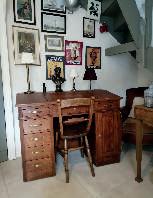


You must wait for your silicone to cure. Depending on the product used, this could take anywhere from 16-48 hours.
If you light your fire whilst the silicone is still curing, the accelerated drying process (due to excess heat) can cause the silicone to harden and lose its ability to compress and stick. This will cause your stove rope to fall off the door and you will need to start the whole process again! For this reason, we recommend you carry out rope changes and other stove maintenance before the cold weather sets in, whilst your wood burner is taking a well-earned break from keeping you warm in the winter.

S



eptember eh? Does that mean summer has finished? I’ve no way of knowing this as today is the 9th August and despite Mrs W reckoning that I claim to know everything, this is clearly not true. If I did, then would there ever have been a Mrs W? Don’t tell her I said that though. Sometimes just her stare can make me soil myself. So, just between us eh?
Freesat remains different from Freeview. Please keep away from Freeview for UK TV reception.


It’s only a minor thing, but be aware that if you order a Manhattan SX Freesat box to use in France, you can’t cut the plug off and replace it with a French one. The plug is a ‘transformer’ type meaning you’ll need to use a UK to French adapter to plug it in.
Unfortunately, the Starlink offer of equipment for only 199 euros is no more. The monthly cost remains at 40 euros but the cost of the kit has gone back to 450 euros. Ouch. Still a great service though. Whilst on the subject of Starlink, unlike your satellite dish for UK or French TV, the Starlink dish points north. If looking to order the service, you can download the Starlink app and use your phone or tablet to scan the sky for obstructions from the place you’d like to locate the dish. As always the general rule is that a clear line of sight is needed, but the Starlink dish can make small adjustments itself so it recommends a 100° clear field of view.
Don’t forget that if need be, you can send both your satellite TV signal and your



terrestrial French TV signal down the same cable (in most cases). To do this you need a coupler & de-coupler. The coupler goes near the dish and aerial and the de-coupler splits them out behind your TV. Or, the decoupler can take the form of a multi-output TV wall plate.

I no longer cover the same areas as I used to. I cover a 90 mins radius of 79240 (Deux-Sèvres/Vendée border). Google Maps will help.



Freesat remains different from Freeview






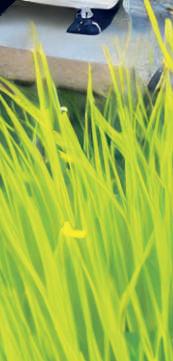



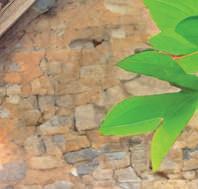

























































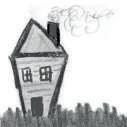






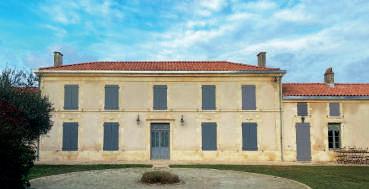


























Family run business based in France which prides itself on a personal professional service. 7 tonne truck to and from the UK and Europe, we also have a box trailer for larger loads. Our highly experienced staff provide a door to door service with packing and dry secure storage We arrange customs clearance for export and import to and from the UK. We are a professional furniture removal company NOT a man and a van.


Phil and Jean Evans (+33) 05 55 34 19 46 Mobile (+33) 06 80 75 87 14

Email p.evans@orange.fr Visit www.transitionremovals.net

● Weekly United Kingdom � France � Spain

● United Kingdom - Kent & Home Counties
● Storage La Souterraine / Canterbury / Lincolnshire




● Very competitive rates

● Fully Insured
● 20+ years’ experience


